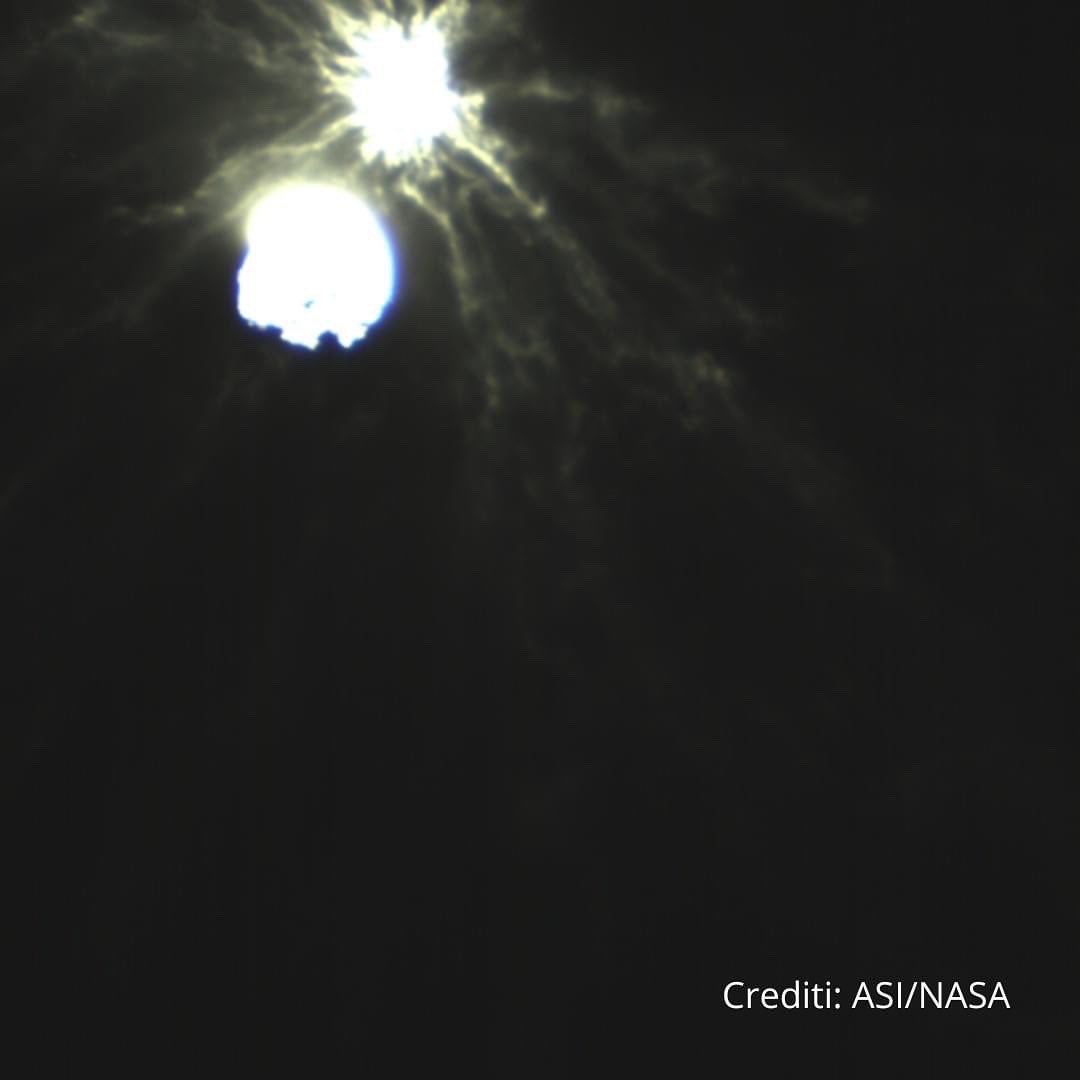Nasa’s Dart asteroid impact mission reveals forces of planetary creation and destruction
Understanding why the material of asteroids reacts more like water than gravel when struck by a spacecraft could help scientists understand how to save Earth from asteroud strikes, and how the planet formed

Your support helps us to tell the story
From reproductive rights to climate change to Big Tech, The Independent is on the ground when the story is developing. Whether it's investigating the financials of Elon Musk's pro-Trump PAC or producing our latest documentary, 'The A Word', which shines a light on the American women fighting for reproductive rights, we know how important it is to parse out the facts from the messaging.
At such a critical moment in US history, we need reporters on the ground. Your donation allows us to keep sending journalists to speak to both sides of the story.
The Independent is trusted by Americans across the entire political spectrum. And unlike many other quality news outlets, we choose not to lock Americans out of our reporting and analysis with paywalls. We believe quality journalism should be available to everyone, paid for by those who can afford it.
Your support makes all the difference.As scientists begin to analyze images of Nasa’s Double Asteroid Redirection Test, which saw a spacecraft slam into the asteroid Dimorphos on Monday, they’re learning surprising things about asteroids. Like the fact that when hit, they react weirdly like water, rather than the masses of gravel that they are.
“I’m shocked by the streamers in the ejecta,” University of Central Florida Planetary Scientists Phil Metzger posted in a recent thread on the social media website Twitter. Dr Metzger was referring to images of the material kicked off of the asteroid Dimorphos — “ejecta” — by the impact of the Dart spacecraft, as seen in an image taken by a small Italian spacecraft nearby the asteroid at the time of impact.
That image shows spider-like filaments of material being kicked away from Dimorphos in the moments after the impact, but, Dr Metzger said, experiments on Earth using sand or gravel and steel balls show uniform, cone-shaped splashes of material after impact.
Understanding why Dimorphos ejecta reacted so differently than the laboratory experiments could be important for the aims of the Dart mission, which seeks to understand if a similar spacecraft impact could be used to divert a dangerous asteroid on course for Earth. At the same time, it may reveal that the forces at play in a high energy collision with an asteroid are similar to those that helped our planet form in the early Solar System.
Dimorphos is not the first asteroid humans have reached out to touch, and it’s not the first to generate more of a liquid-like splash when impacted either.
In 2019, the Japanese Hayabusa 2 mission used an impacting tool to sample some of the material of the asteroid Ryugu, which was then returned to Earth for study in late 2020. Images of the ejecta thrown off of Ryugu show the same streamers of material seen in the new images of the Dart impact, Dr Metzger wrote.
Streamers can form when an object is dropped into water, Dr Metzger noted, because water has strong surface tension forces.
“But granular materials have nothing like the strong surface tension of water,” he wrote. “Yes, there is cohesion between particles, but it is super weak compared to impact dynamics and should be unable to organize massively-sized streamers.”
Recent research into the Ryugu ejecta streamers may offer a clue, Dr Metzger wrote. It’s possible for streamers to form when granular material includes particles of sufficiently different sizes.
This happens because as the granular material, small rocks essentially, bounce into each other, they lose energy with each bounce, the same way a bouncing ball does on the surface of the Earth. That means that when enough gravel is bouncing around in the microgravity of space, some of it will tend to condense into an area of space as interactions between individual rocks robs them of the energy to travel further.
That process, known as “granular collapse,” has been investigated in microgravity experiments, Dr Metzger wrote, and is thought to be part of the process of how planet and asteroids formed from the raw stuff of the protoplanetary disk around the Sun billions of years ago
“The recent papers on Hayabusa 2 argue that this same process happens inside the ejecta cones from impacts into granular material, causing filaments or streamers to form,” he wrote. “So it works for both planet formation and planet destruction!”
These results highlight the importance of doing actual experiments in space, Dr Metzer concluded, “because we never know what we will see. The cosmos is amazing and complex.”
In the lead up to the Dart mission, Nasa and Johns Hopkins Applied Physics Laboratory engineers noted that despite their best modeling and lab experiments, nothing can really simulate an asteroid here on Earth. Dart was an essential test not only to see if Nasa could hit and move an asteroid with a spacecraft, but to understand how the material of an asteroid reacts to such an impact — an essential property to understand if a Dart-like spacecraft is ever used to protect Earth from a dangerous asteroid.



Join our commenting forum
Join thought-provoking conversations, follow other Independent readers and see their replies
Comments